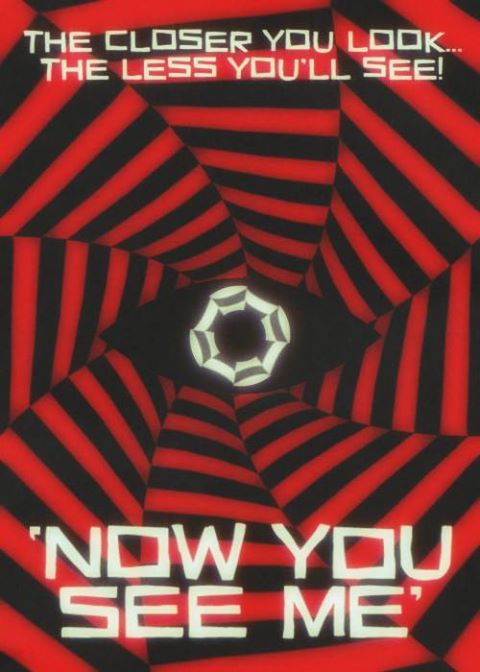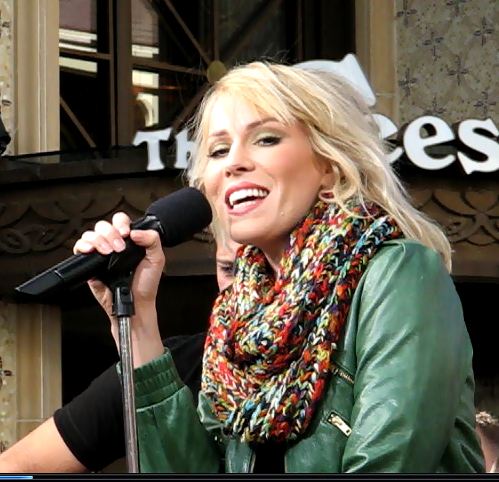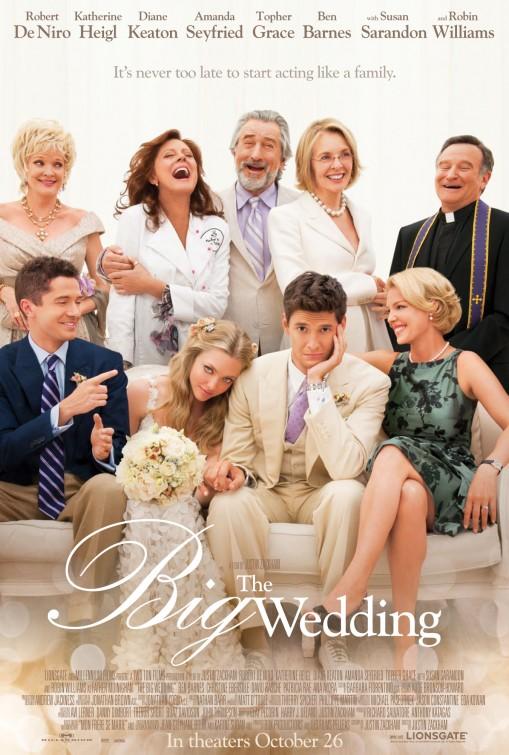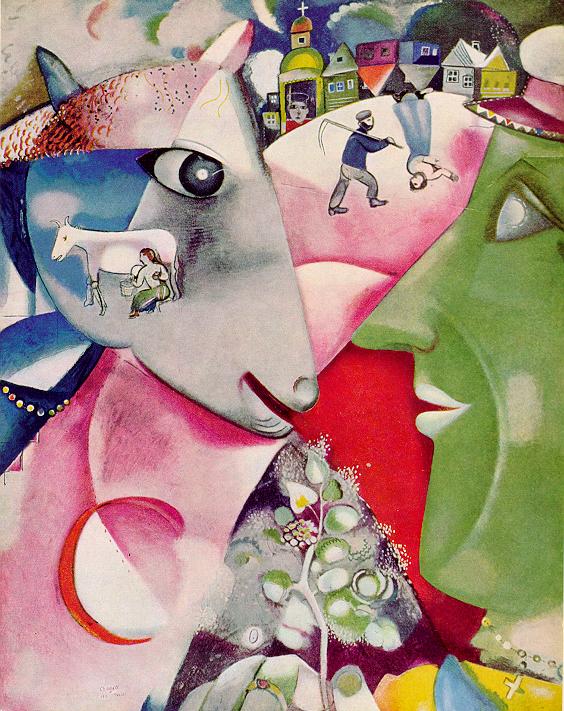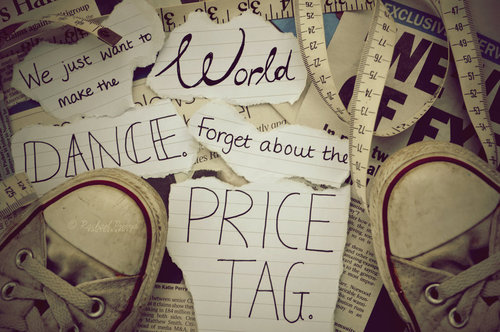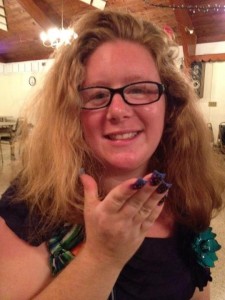On Saturday April 13, 2013, I visited the EL Museo Del Barrio with my mother. The exhibition that was being shown was entitled SuperReal and is being shown from February 5th – May 19th. I was surprised how small the museum actually was but I saw some truly amazing artwork nonetheless. I never heard of the museum before but I love seeing art and learning about new artists and so I was intrigued by many of the pieces I saw at the Museo Del Barrio. I was not sure what the word “Barrio” meant and with some research I found out that in Spanish the word “Barrio” means “neighborhood,” or an “urban district or quarter”. After knowing the meaning, the museum’s choice for using that word made much more sense. I noticed that other buildings in that part of the city also used the word Barrio as part of their store name.
When I entered into the exhibition I noticed about 5 security guards checking out everyone carefully to make sure that people were following museum rules. The guards threw me off at first, but I tried to forget about them following me and got my mind focused on the paintings and I loved much of what I saw. The museum consisted of 4 main rooms and then another room that you entered through glass doors. This exhibition explores the layered meanings and interpretations of the “real” as it is represented in photography and video art. SuperReal featured more than 70 works by artists and each artist depicted something very different. These works allowed the artist to explore the limits of narrative from and its relationship to reality.
The first piece that you see when you enter is awesome because of the flower design that was painted on an old 1995 Ford Victoria. The flower design was a Ayate fabric (a kind of fabric manufactured of the thread of the agave, or pita) that was layered over the car; and inside the car were tiny dried roses that were packed into the car tightly. At first I really was not sure what was inside the car, it kind of looked like little bugs to me but after I read the photograph’s description it all made better sense to me. The photograph was created by Bestsabee Romero in 2005 and was entitled “Ayate and Dog.” This photograph was taken on the border between Tijuana and San Diego and was meant to symbolize the hardships that came along with people who crossed the border to America in 1963. The flower design looks like it came from the hippy era where peace, love and happiness was the message. The amazing flower design on the car showed the beauty that someone feels when they cross over to America. The car being filled with dried flowers shows the hardships that someone also goes through when they cross over the border. A dried flower is not alive but rather is dead and that represents how people can become lifeless after experiencing great stress and turmoil due to the difficulty that comes along with crossing the border from one county to another. This exhibition beside showing paintings and photographs also showed some video art that was projected onto canvas or just watched as a mini movie on a small television screen. Even though I was not that amazed by the video art, it was still a good concept to know existed.
One piece of art that used people’s sense of hearing was a video piece that required viewers to also become listeners and put on headphones. Inside the headphones, you heard all types of sounds, mostly scary, and those sounds were the sounds that the artist recorded while he walked between the streets of Manhattan. This piece did not impress me and made Manhattan seem like a place that someone would not want to walk around in and that is not the message I would want to give off because Manhattan also has many beautiful sounds to hear. After listening to that piece, my eyes caught a hold of photograph by Miguel Rio Branco entitled “Feather and Dog” that was taken in 1983. When describing the photographs, I noticed that many of them for some reason were taken in the year 1983. “Feather and Dog” shows a dog in the background sitting on a bunch of pine leaves with a large red and yellow colored Indian feather in the foreground of the photograph that was shot extremely close up. This photograph, even though it caught my eye, was not one that I was especially fond of.
The next piece that caught my attention, and that I did like, was a photograph taken in black and white that showed a hallway in a hospital (found out it was a hospital from the photo description and by realizing from his other photograph in the museum that he likes depicting hospital scenes) where tons of soap and water exploded on the hallway steps. The photograph gave off sort of a horrific or scary image as if someone was going to be trapped in that hallway due to the fact that the soap and water was so thick and heavy and traveled all the way down the steps. This photograph was taken by Marcos Lopez and is a C-print with hand-colored tinting. Chromogenic color prints (C-prints) are full-color photographic prints made using chromogenic materials and processes. These prints may be produced from an original, which is a color negative, slide, or digital image. The chromogenic print process was nearly identical to the 20th century color snapshot and has become the most common type of color photographic printing. Marcos Lopez was trying to show the depiction of a hospital scene as unhappy and uncomfortable as many hospitals can be when you are a patient.
My very favorite photograph in the museum was the next one that I saw, which was also by the photographer Marcos Lopez, which showed two men in a hospital. This photograph made me do a double take because the photograph did not show two different men but rather the same man in two different ways. This photograph was huge and very striking and it helped that the man was extremely handsome with nice facial features. The photograph showed a hospitals surreal scene where the subjects fulfilled both roles of doctor and patient. On the left the man is wearing a doctor’s outfit and a stethoscope around his neck and the same guy on the right is only wearing shorts and is hocked up to hospital equipment with a bandage on his leg and is standing with a cane. As a doctor, he has his hair pulled back tightly and as a patient his long hair is hanging down and it is wet. The doctor and patient are linked together, joined by the same bandage around their arm. That bandage is filled with blood to symbolize that they are blood brothers or the same person and that the doctor feels the pain that his patient is going through. The message is portrayed in a perfected way in this photograph and you can feel that this man is torn between his duty as a doctor and the fact that he too goes through suffering in his life and he is not always the caretaker of others but that as a doctor he can be in a better position to take care of himself. The quote in the next photograph “The Magician” taken in 1994 by Miguel Rio Bronco was stated very well and bears repeating “To me art is a question of: first, having something to say from the inside that has nothing to do with description of reality, reality being just the material thing that the camera captures. I always focus on the images I want to show, not necessarily to see, some of those images I would even want not to see. I do not create images that, when related to others in specific construction, make sense, create rhythms and bring emotions to the surface.” That quote by Miguel Rio Branco states how art makes me feel sometimes as well. He said it in a way that was so insightful that I had to directly type in his full quote. Miguel’s photograph shows the silhouette of a magician walking the streets carrying his long stick and wearing a top hat. After looking at that photograph my mom and I walked around and noticed that there was more art through two clear doors. We found out from the security guard name William Soto that this exhibition behind the clear doors was going to remain up for the next six months while the other exhibition, in the other rooms, would be ending in a few weeks on May 19th. The pieces, in the room that would remain up longer, were very interesting. One wall was chipped away at and you could see the brown coloring that was underneath the white paint. The artist was still in the process of completely his work. The piece was being done by Panvel Acosta and he was in the process of gluing chipped pieces together to recreate someone else’s painting that was entitled “Goat Song #5: Tumult on George Washington Avenue” and was painted in 1988 by Manuel Macarulla. “Goat song” means ‘tragedy’ in Greek. In the copy of the painting, across on the wall directly opposite, first Panvel marked the spot that he was going to use to draw the photo on the wall, using blue tape in the shape of a large rectangle. His objective was to mirror the painting that was on the wall directly across from where he was making his creation. He used a pencil to first draw and copy the picture on the opposite wall and then he cut away at the wall around his drawing and used those wall chippings to fill in his drawing. He actually glued the chippings to his drawing and it was totally amazing to see. I wondered what he was going to do with the wall around his artwork because the wall looked a mess but maybe he wanted to leave the wall a mess so that people could tell that he carved pieces from the wall and used those pieces in his recreation. Understanding Panvel Ascosta’s process was fascinating and the security guard, William Soto, is the one who told us how Panvel was creating his artwork. William Soto said that, if you come to the museum during the week, you will see Panvel Ascosta working on his piece and you can watch and enjoy in the whole process. At first I thought that the painting on the one wall and the recreation of that painting on the other wall were done by the same artist, but they were actually done by two different people. Panvel Ascosta was inspired by Manuel Macarulla’s painting so much that he decided to copy it, but in his own way and put his own spin on it. Panvel’s artwork was indeed very unique and a style that other people who were walking around the museum seemed to be intrigued by as well as my mom and I were. The painting that was depicted on the opposite wall was an oil painting on canvas of a carnival parade in Santo Domingo where people were dressed in costumes with the use of lots of bright colors and the same picture was on the other wall but it was done in just the color white, due to it being done with wall chippings, with a pencil outline.
On another wall in that same room was a photograph portrait of Shaun “El C” Leonardo taken in 2007. The photograph was a portrait of the artist in a white scary-looking mask, standing with a dark background behind him and him wearing white boxing gloves and a robe. “EL C”, the artist, was influenced by comic book superheroes, sports rituals and machismo in Latino culture and that is why he took a photo of this boxer and gave it as a gift to the Museo Del Barrio. “EL C” wrote under the photograph description “he finds that at the base of these cultural ideals lies confusion, desperation, and the inevitable failure one experiences when attempting to locate himself within superficial notions of manhood.” The topic of machismo in Latino culture and how men use masculinity within their identity to define themselves is a big topic that I am actually learning about in my Junior Seminar class this semester, so I understood what this artist was talking about and portraying in the message of his photograph. It was interesting for me to come across that same topic again and see it expressed in a photograph.
The last piece of artwork that I chose to focus on in that room was a display made entirely of your basic large non-name-brand latex men’s flip-flops created by Benvenuto Chavajay. The flip-flops had either a blue strap or a green strap. The flip-flops were all hooked onto a board that could be taken off the wall and put into another exhibition when this exhibit is over. There must have been 200 sandals all hooked together with the straps pulled apart so that the straps were hanging down loosely. Some of the flip-flops were cut and pieced together so they fit into each other nicely. The whole collage, if you could call it that, was very large and in a formation that I still cannot quite figure out. The collage of flip-flops reflects the artist’s belief that his culture has forgotten the value of the artisanal. The information card under the collage stated “While he laments the public preference for plasticized products over handmade objects, he remains hopeful of his art’s ability to promote a change in the direction of consumerism.” The flip-flops showed how society should not put an importance on material things and that everyone would be happier if they all conformed to wearing the same things and bought those things cheap and did not care about the so-called price tag. This piece at first made no sense to me and it just looked like a bunch of silly flip-flops screwed together but, when I figured out the message it actually was a very creative but simple way to state its powerful message.
My mom and I left that room and moved back to the other main rooms and took one last look around at everything to see if I missed copying down any of the descriptions of paintings or photographs that we liked. We went back and looked at two photographs that we quickly glanced at the first time around. Both the photographs were taken by Sophia Rivera in 1979 but, not to overwhelm someone, they were not hung next to each other but rather on both sides of another piece of artwork that was in between them. The two photographs were taken extremely close up with a black background behind the person and they were blown up very large. One was a portrait of boy sitting in a chair with light illuminating around his head like a halo. The second was a portrait of girl sitting in chair with light also illuminating her head like a halo. Both people were nice- looking and the choice of a black background and the halo effect were a interesting way to capture these two people.
Taking one last look in all the rooms, we decided to spend a few more minutes looking at our last piece that we were going to take notes on. It was a collage by the artist Vik Muniz and he took images from magazines including a picture of Peewee Herman, Richard Simmons, Andy Warhol and many other people and things and created a picture of a monkey sitting on a rock under a tree. This collage was extremely fabulous and very well done. Every magazine picture/cut-out was placed in exactly the right spot to complete the puzzle and made an overall excellent and creative picture. My mom and I must have been in the museum for two hours admiring everything. Like I said before, the museum was quite small but it had several well done works that I enjoyed seeing and being able to get the opportunity to understand and have the challenge of figuring out the messages that were being shown. I was glad to have had the experience of visiting the Museo Del Barrio because I always like experiencing new art, and learning about new artists, including art from other cultures. Art plays a large part in making our lives infinitely rich. I surely could not imagine a world without art. By looking at and experiencing works of art, we stimulate different parts of our brains to bring on all sorts of emotions. Art gets us to think in ways that we would ordinarily not think of on our own. Seeing what other people have created has inspired me to start creating myself and I have come to the realization that art can be done using anything, be about anything and art does not have to make sense to anyone and it can still be defined as art. Art gives people a way to be creative and express themselves. Art is subjective, and means something different to every single person who enjoys it. So how will you choose to use and express art in your life today?




